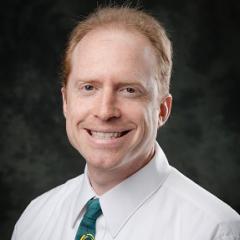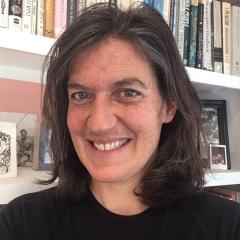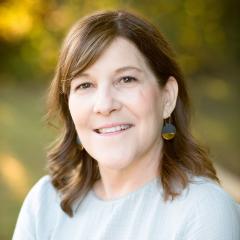Professionally, I wanted to learn about atomic layer deposition (ALD) and design a 3-D printable ALD to make better solar cells. ALD was pioneered in Finland and was recently used by Professor Hele Savin to make record-breaking high-efficiency black-silicon solar cells. Dr. Savin graciously invited me to spend an academic year with her team at Aalto University as a Fulbright-Aalto University Distinguished Chair.
It was not anything like I expected. I had talked with her and a few students over Skype, so I thought I was joining a small, focused group. When I arrived, however, I received a lesson in Finnish modesty and saw a completely different culture.
First, I had trouble getting into the building. I approached it from the rear, having used the remarkably smooth Finnish public transportation system. All the doors were locked, and the giant building was more than a city block long. The research facility was shared with the Finnish government and you had to go through a single guarded door to enter! We have nothing like this on my campus, which made the interactions with students in the courses I taught completely different than the open-door policy I was accustomed to at home.
Dr. Savin’s group was large and complex with many post docs and PhD students working on a wide array of projects. The group meeting completely filled the conference room. Space for the large group was at such a premium I shared an office with Dr. Savin. Although awkward at first, this proved valuable because in addition to picking up technical knowledge, I saw first-hand how she ran such a large group. I imported many of these informal lessons back to the U.S., and now advise a 24-member team made up of many visiting scholars and post docs, graduate and undergraduate students.
Solving Problems the Finnish Way
The Finnish way of approaching problem solving is systematic and relentless, which contrasted with my more American ‘just do it’ attacks on technical problems. Trying it the Finnish way has led to an immensely broad foundation for what I went to Finland to research.
We now have collaborative publications on the compatibility of 3D printed devices in the cleanroom, and on the chemical compatibilities of 3D printed materials (so we could get in to do my experiments), and many papers on the science of off-gassing of ALD-coated 3D prints. We also collaborated on tools for Dr. Savin’s lab using my approach to help make tools in Finland rather than buy it externally – e.g. low-cost micromanipulators for a new probe station saved thousands of dollars. I also worked with her team on producing black silicon, and used my less-modest approach to shout about the economic benefit of these breakthroughs. The bottom line: we found that black silicon will drop costs 10% for solar cells, making the fastest growing energy source grow even faster!
Aalto helped me set up a new course on developing open hardware for science. It was interesting teaching in a much more relaxed atmosphere (my classroom had couches) and many of the student projects resulted in new tools for their labs, publications, and more collaborations.
There is zero nonsense in Finland. People say what they mean or don’t say anything, which I found extremely refreshing. The engineer in me is certainly culturally Finnish. This made collaborating and doing even major projects possible. One of which was to see if the open hardware savings we were demonstrating in Dr. Savin’s lab could be scaled nationally. I presented the idea, was supported and passed up the hierarchy at the University to get access to their data. This led to a major interdisciplinary publication with Dr. Savin (Elec Eng), J. Partanen (Mech Eng), J. Seppälä (Chem Eng) and Ismo Heikkinen (Dr. Savin’s PhD student) that found Finland's science funders could save millions of Euros/year if they used the open hardware approach. My Finnish colleagues embracing open hardware is not that surprising, as Linux, the open source operating systems that runs the Internet, was originally developed in Helsinki.
"All of this work helped me to obtain an endowed chair at my home university, and our collaborations continue."
All of this work helped me to obtain an endowed chair at my home university, and our collaborations continue (look out for a low-cost open source ALD system in the near future when Ismo, the lead author on the study mentioned above, comes for a visit in Fall 2020!)
Experiencing the Finnish School System
"Although professionally my Fulbright Finland experience was amazing, the changes for my family were perhaps more pronounced."
I went with my wife and four children (4th, 1st, preschool and baby). We really enjoyed the Finnish culture as a whole, but particularly appreciated how Finns prioritize children. Our trip has not only significantly impacted our family’s cultural understanding, but also our parental perspective on education. The Finnish educational experience for my children was fantastic (for details see articles that I wrote in 2018: What America Can Learn From Finland’s Education System: We Should Respect Teachers and Take Only the Best and What America Can Learn From Finland’s Education System Part 2: Embrace International Students and Pursue Graduate School for a Secure Future).
There is no question in our minds why Finland’s education system is ranked #1 globally. Even talking to a teacher for a few minutes, you can tell they operate more like pedagogical academics than conventional American teachers.
We don’t speak Finnish, but we decided to enroll our children in Finnish public school as we wanted them to get the full experience. The eldest three loved it. It re-arranged our priorities. It was so good in fact that all of them chose to be home schooled when we returned – there was frankly no going back to the conventional overstuffed busy-work American classroom after their experiences in Finland of short hours, lots of outdoor exercise, and small-focused classes taught by hyper-educated, passionate teachers.
Our children are now all thriving at home school, which is generously supplemented by extra-curricular activities like Finnish folk dancing, skating, cross-country and alpine skiing, and taking outdoor nature classes at the local discovery center.
We have already been back to Finland for the kids to participate in a Finnish Dancing Festival (Tanssiva Turku). It felt a bit like coming home and I am sure we will be back again.


